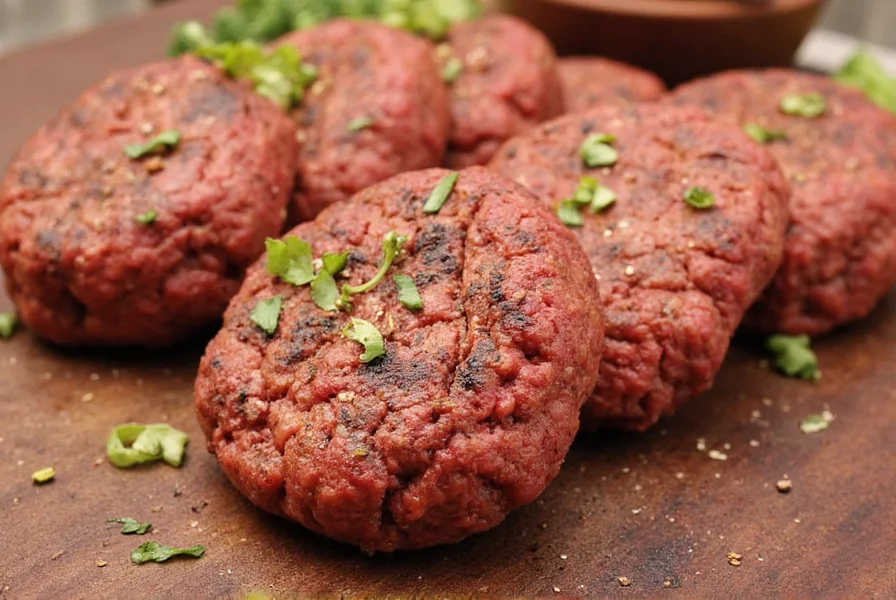Table of Contents
- Why Beef Seasoning Matters
- What’s Inside a Great Beef Seasoning?
- Homemade vs. Store-Bought: Which Is Better?
- Top 5 Beef Seasonings You Need to Try
- How to Use Beef Seasoning Like a Pro Chef
- Buying Guide: How to Choose the Perfect Beef Seasoning
- Final Thoughts on Mastering Beef Seasoning
Why Beef Seasoning Matters
Let’s cut to the chase — if you’re grilling burgers, roasting ribs, or simmering a stew and it doesn’t taste like beef just got a flavor boost from heaven itself, did it really happen?
Beef seasoning isn’t just about salt and pepper anymore. It’s a carefully crafted blend of spices that brings out the richness of the meat while adding depth, smokiness, heat, or even a little sweetness.
What’s Inside a Great Beef Seasoning?
So what’s in your average beef seasoning? Here’s a breakdown of common ingredients:
| Spice | Flavor Profile | Why It's Used |
|---|---|---|
| Salt | Salty | Enhances natural flavors |
| Black Pepper | Pungent, earthy | Adds sharpness and bite |
| Paprika | Smoky, sweet | Color and mild smokiness |
| Garlic Powder | Pungent, savory | Umami boost |
| Onion Powder | Sweet, sharp | Balances other flavors |
| Cayenne | Hot | Heat kick |
| Brown Sugar | Sweet | Balance spice and caramelization |
Homemade vs. Store-Bought: Which Is Better?
You’ve got two options when it comes to seasoning your beef: whip up your own custom blend at home or grab a pre-made one off the shelf.
Pros of Homemade:
- Totally customizable to your taste
- Cost-effective over time
- No weird preservatives
Pros of Store-Bought:
- Convenient and consistent
- Specially formulated for beef
- Saves time for busy cooks
Top 5 Beef Seasonings You Need to Try
- Stubb’s Original Beef Marinade – Smoky, rich, perfect for slow-cooked ribs
- Weber Chicago Steak Seasoning – Bold and peppery, ideal for grilled steaks
- Montreal Steak Seasoning (Various Brands) – Classic mix of garlic, salt, pepper, and spices
- Rubbed & Co. Smokehouse Blend – Balanced smoky-sweet profile for burgers and brisket
- McCormick All-Natural Beef Seasoning – Clean-label option without artificial additives
How to Use Beef Seasoning Like a Pro Chef
Here’s where things get fun! Whether you're working with ground beef, a steak, or a pot roast, how and when you apply your seasoning matters.
- For Grilled Steaks: Rub generously 45 minutes before cooking to allow penetration
- For Burgers: Mix into the patty before shaping, not after
- For Roasts: Apply seasoning right before cooking; let rest after cooking for juicier results
- For Stews: Add seasoning during the browning phase for deeper flavor infusion

Buying Guide: How to Choose the Perfect Beef Seasoning
When shopping for beef seasoning, consider these key factors:
- Flavor Profile: Are you looking for bold heat, deep smoke, or sweet umami?
- Use Case: Is this for burgers, steaks, tacos, or stews?
- Dietary Needs: Look for gluten-free, low sodium, or organic options if needed
- Brand Reputation: Trusted names usually mean better consistency and quality
| Product | Flavor Type | Best For | Key Feature |
|---|---|---|---|
| Stubb’s Original Beef Marinade | Smoky & Rich | Slow-Cooked Ribs | All-natural, no MSG |
| Weber Chicago Steak Seasoning | Bold & Peppery | Grilled Steaks | Restaurant-grade flavor |
| Montreal Steak Seasoning (Various Brands) | Classic Garlic & Pepper | Flat Iron Steaks | Versatile, widely available |
| Rubbed & Co. Smokehouse Blend | Smoky-Sweet | Burgers & Brisket | Artisan blend, small-batch |
| McCormick All-Natural Beef Seasoning | Well-Rounded | Everyday Cooking | Clean label, affordable |
Final Thoughts on Mastering Beef Seasoning
If you want your beef to sing instead of just sizzle, start playing with your seasoning. Whether you’re a weekend warrior flipping patties or a seasoned pitmaster chasing that perfect bark, beef seasoning is your secret weapon.
Now go forth — season boldly, cook passionately, and never let a bland burger ruin your day again!










 浙公网安备
33010002000092号
浙公网安备
33010002000092号 浙B2-20120091-4
浙B2-20120091-4